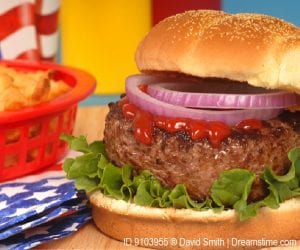How do we feed a growing population that increasingly wants to eat meat? This was one of the main questions posed by Dr. Steve Polasky during his talk “The Real Sustainable Agriculture: Feeding 9 Billion and Preserving Nature” during last month’s WWF Whole Planet Full Plate food symposium.
Polasky’s talk focused on the notion of ‘real sustainable agriculture.’ But what does that mean? According to Polasky, real sustainable agriculture isn’t about maximizing production, but rather about optimizing other food-related things we care about. These things range from health and nutrition to water quality to the health of the other species on the planet.
It would be one thing if our problem were just population growth. But add to that a rapid shift toward a meat rich diet and the problem expands. Producing more grain for animal feed is a less than ideal use of our land especially since 33% of croplands are already used for livestock feed production. So, what are our options? According to Polasky, we can either: fail to meet the growing demand for food, meet the demand for food but lose biodiversity, or get smarter about how and where we produce crops. If you’re thinking anything like Polasky, option three is the only way to go.
So how do we get smarter about our crops? Polasky suggests we consider three concepts. 1) Tradeoffs between the multiple things we care about – a focus on incentivizing forest growth, for example, is great for our carbon budget but not so great for food production. Is there a way we can have both? 2) Integration of the landscape to deliver multiple benefits – how might a single piece of land meet our economic and environmental needs? 3) Balance – right now we have too much of the bad things (such as food waste) and not enough of the good things (like perennial crops.). Once we incorporate these concepts into solutions and ask ourselves questions like “can we grow the crops that we need and want in a way that is consistent with other things that we need and want?” then we can truly create real sustainable agriculture.
Polasky proposes, “It’s not just about knowing, it’s about doing” and there are some programs already taking action. In the US there is the Conservation Reserve Program which helps farmers take land that is at high risk for erosion and shift it to more native cover. China’s Grain for Green program aims to improve land use and quality by helping farmers retire farmland that is susceptible to soil erosion. While these programs are encouraging we must seriously consider the long-term sustainability of our global farming practices.
Perhaps we can all adopt Polasky’s suggested tagline: ‘Get Smarter: Saving the World…and Loving It.’



